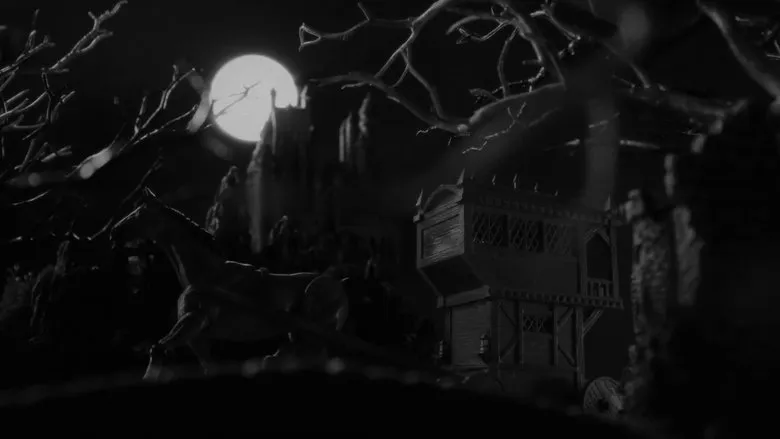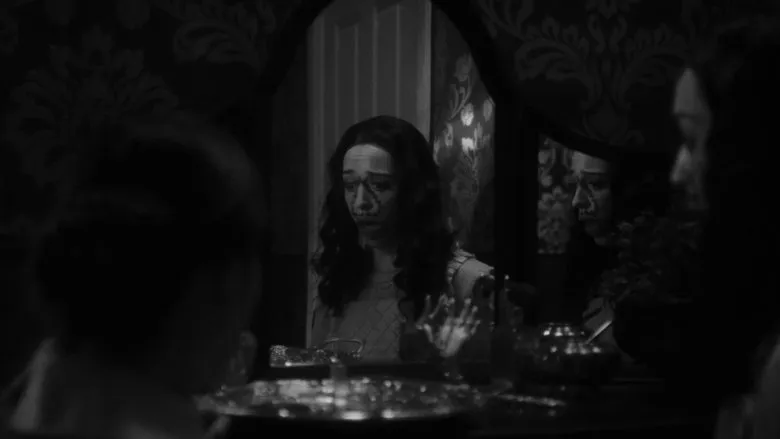Beyond the Veil: The Art and Vision Behind “Lavenza”
“Lavenza” is not merely a film but a deeply unsettling dive into the shadows of identity, beauty, and societal pressure. This visually stunning and profoundly dark movie unravels the tale of Lavenza, a noblewoman’s terrifying pursuit of external perfection. As acclaimed as the film’s striking narrative and unforgettable imagery are, the journey of bringing “Lavenza” to the screen was a meticulous artistic endeavor, blending visionary direction with a chillingly relevant message.
The Genesis of a Macabre Masterpiece
The seed for “Lavenza” was planted in the director’s contemplation of the relentless societal expectations placed upon women, particularly concerning their appearance. Starting with the core idea of a noblewoman, Lavenza, struggling under the critical gaze of her charismatic husband, Monsieur de Lantin, the creative team aimed to escalate this familiar pressure into something unique and horrific. The choice of a 19th-century setting provides a rich, aristocratic backdrop, where superficiality and class dynamics reigned supreme, amplifying the personal agony of Lavenza’s disenchantment and her husband’s disdain.
The concept of Lavenza “thrifting” for body parts from other women, combining surgical skill with dark magic, became the grotesque yet poignant metaphor at the heart of the film. Filmmakers discussed at length how to portray this disturbing process in a way that underscored the character’s psychological disintegration rather than just the physical horror. The goal was to visualize her sacrifice of self-autonomy and free will with each new acquisition, leading to a truly unique brand of body horror rooted in profound psychological decay.
Crafting a World of Horrific Beauty
The visual aesthetic of “Lavenza” plays a critical role in its impact. The production design team faced the intricate task of building a 19th-century world that could convey both lavish beauty and an underlying sense of dread. From the opulent, yet suffocating, décor of the de Lantin manor to the eerie, almost surgical precision of Lavenza’s hidden chambers, every set piece was designed to reinforce the film’s pervasive atmosphere. Filming locations were chosen for their capability to exude a sense of decaying grandeur, reflecting Lavenza’s own fading inner world amidst her outward transformations.

An early artistic rendering capturing the melancholic beauty of Lavenza's world.
The costume department worked closely with the director to chart Lavenza’s journey through her evolving attire. Initially dressed in clothes that underscore her “unremarkable appearance,” her wardrobe becomes progressively more extravagant and revealing as she incorporates new body parts, reflecting her forced metamorphosis into the sensuous ideal desired by her husband. This visual progression is key to understanding her gradual detachment from her own emotional and psychological identity.
The Visceral Impact of Transformation
Bringing Lavenza’s grotesque transformations to life required a meticulous blend of practical effects, intricate makeup artistry, and subtle visual effects. The challenge was to depict the macabre surgical procedures and the uncanny changes to her body—a new face embodying the sensuality of a courtesan, a figure rivaling that of a supermodel—in a way that felt both fantastic and viscerally disturbing. Special effects artists collaborated with the director to ensure these moments landed with a chilling realism, emphasizing the horror of Lavenza losing ‘pieces of herself’ with each modification.

A glimpse into one of Lavenza's haunting physical transformations.
The film’s dark fantasy elements were carefully balanced with its body horror, ensuring that the visual spectacle served the deeper narrative. The decision to make some “donors” willing participants, seduced by wealth and desire, while others are coerced or even murdered, provided the filmmakers with a powerful avenue to expose the darker aspects of society. This allowed them to explore the disturbing extent to which beauty and desirability can become ultimate, deadly currencies.
The Actress’s Challenging Portrayal
The lead actress portraying Lavenza faced an immense challenge in embodying such a complex and transforming character. Her performance needed to convey Lavenza’s initial vulnerability and yearning for validation, followed by a harrowing descent into obsession and madness. The transformation wasn’t just physical; it was an emotional and psychological unravelling, requiring the actress to portray a subtle loss of self, thought, and desire with each new body part acquired. Her nuanced portrayal allowed audiences to witness Lavenza becoming increasingly clouded, unable to distinguish between her original self and her idealized version.

The actress capturing the unsettling beauty and internal turmoil of Lavenza.
A Cautionary Tale for the Ages
“Lavenza” is a film meticulously crafted to provoke thought and conversation. Its behind-the-scenes journey was about more than just cinematic production; it was about articulating a powerful commentary on identity, class, and power. Lavenza’s transformations serve as a potent metaphor for the relentless societal pressures women endure to conform to unrealistic beauty standards. Her tragic realization—that she has lost herself in the process of becoming the woman her husband desires—forms a heart-wrenching climax designed to resonate deeply with audiences.
Ultimately, the creation of “Lavenza” was a collaborative triumph, delivering a cautionary tale about the perils of objectification and the commodification of the human body. By challenging our fundamental notions of identity and self, “Lavenza” leaves an indelible mark, reminding us of the profound consequences when external validation dictates one’s self-worth. Its exploration of dark fantasy seamlessly blends with its sharp social commentary, leaving viewers to ponder the true cost of beauty and desire long after the final credits roll.